RtB Contest #4!
Big fat ol’ Hershey bar (either in person or through the mail) goes to the winner! Ready?
Who is this?
As usual, sorry Mavis…you ain’t allowed to participate. ![]()
Send your answer by email: ratfink at finkweb . org
=============================
If you’ve ever seen the movie The Road to Wellville (and I’m not sure I’d recommend it; it’s one of the more bizarre films I’ve seen), you know it’s a send-up of the Kellogg family — namely, John Harvey Kellogg and his wife — and their health spa in Battle Creek, Michigan in the early 1900s.
 Now if you’re thinking that John was the cereal guy, you’d be partly correct. He experimented with grains, making them into edible breakfast foods for his patients at the spa. Then his brother, Will Keith Kellogg, went to work for John as a bookkeeper — until a huge tiff sent Will packing.
Now if you’re thinking that John was the cereal guy, you’d be partly correct. He experimented with grains, making them into edible breakfast foods for his patients at the spa. Then his brother, Will Keith Kellogg, went to work for John as a bookkeeper — until a huge tiff sent Will packing.
But I’m getting ahead of myself. Strange story regarding how Corn Flakes came about…
Dr. John ran the Battle Creek Sanitarium, where he practiced his beliefs that whole grains and other nutritious foods (not meat, however) would make for a better life. So far, so good. When younger brother Will went to work for him, he (Will) began to experiment in the kitchens for a digestible substitute for bread. According to the W. K. Kellogg Foundation website, here’s what happened:
By accident, he let stand [overnight] a batch of boiled wheat. When he returned the next day, the “tempered” wheat had turned into flakes. From this discovery came Corn Flakes…”
Eureka. They eventually substituted corn for the wheat, and a new food was born. The feud started when Will, seeing dollar signs and marketing campaigns, told his older brother that the new flaking process should be kept secret. John, on the other hand, wouldn’t hear of it, and allowed anyone and everyone to wander through the kitchens to watch the cereal being made.
Big mistake.
Why? Because one of the wanderers was a guy named C. W. Post. He was amazed at the process, went off on his own and copied it, and founded the Post Cereal Company, which stood for decades as Kellogg’s main competitor. Yikes.
 Will got so steamed that he packed his bags and left his brother’s employ. He later went on to form his own cereal company, and the rest is history. Launching out on his own also gave him the freedom to make the other change his brother would never consent to: putting sugar in the corn flakes recipe.
Will got so steamed that he packed his bags and left his brother’s employ. He later went on to form his own cereal company, and the rest is history. Launching out on his own also gave him the freedom to make the other change his brother would never consent to: putting sugar in the corn flakes recipe.
Surely that idea would never work….
But let’s get back to Johnny.
Being strict Seventh Day Adventists, and adhering to the religion’s ideals about optimum health, John and his wife were vegetarians. No problem there. Whatever gets you through the night. But John took things a bit further. He believed:
- The coupling of a man and a woman was “the sewer drain of a healthy body,” and should only be entered into when children were the intended result. He was married to his wife for over forty years, and never once did they….you know.
- Enemas cured everything. (That’s all I’m going to say about that.)
- Eugenics (controversial movement devoted to creating a better world by improving the human gene pool) was a necessary ingredient to maintain the purity of the American race. Immigrants and non-whites polluted the gene pool. He told the National Conference of Race Betterment in 1915, “The world needs a new aristocracy — a real aristocracy made up of Apollos and Venuses and their fortunate progeny” (New York Times archive)
- Intense, invasive hydrotherapy (I’m thinking that’s colonics on steroids, friend) and electric shock did a body good.
That said, he did do some good work, too. His biggest push was for government control of tobacco, which he claimed, in 1922, would bring about “the physiological, pathological, nutritional, eugenic, moral, and economic devastation” of the country. His efforts went all the way to Washington, where anti-tobacco legislation was introduced. Obviously, he was unsuccessful in convincing Congress to outlaw cigarettes.
So anyway…next time you’re munching on your Corn Flakes, Frosted Flakes, Apple Jacks, Special K, All Bran, Frosted Mini Wheats, Froot Loops, Cocoa Krispies, Rice Krispies, or Raisin Bran (the “two scoops of raisins” variety), think of the corny flake who started the whole crazy business.
Fink out (to get some Shredded Wheat).

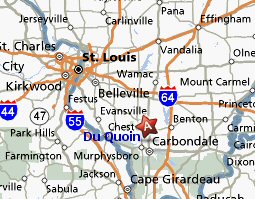 Charles Collins was born on 26 July 1933 in extreme southern Illinois, in a town of about 6,000 called DuQuoin. It doesn’t even rank a name on the map, so I gave it one myself. (It’s about 90 miles southeast of St. Louis, MO.) Anyway, we’re talking bigtime hillbilly country. Yowza. I remember visiting my great-aunt Nina (pronounced Nye-nah, of course) one weekend, and she was cooking cabbage to make for the week’s meals. Dear God in heaven. I had to stay outside in the sweltering heat, as opposed to going inside (where it was also sweltering) and smelling the cooking cabbage. I about gagged. Dad was amused, however. Anyway, I have never been able to stomach cabbage since.
Charles Collins was born on 26 July 1933 in extreme southern Illinois, in a town of about 6,000 called DuQuoin. It doesn’t even rank a name on the map, so I gave it one myself. (It’s about 90 miles southeast of St. Louis, MO.) Anyway, we’re talking bigtime hillbilly country. Yowza. I remember visiting my great-aunt Nina (pronounced Nye-nah, of course) one weekend, and she was cooking cabbage to make for the week’s meals. Dear God in heaven. I had to stay outside in the sweltering heat, as opposed to going inside (where it was also sweltering) and smelling the cooking cabbage. I about gagged. Dad was amused, however. Anyway, I have never been able to stomach cabbage since.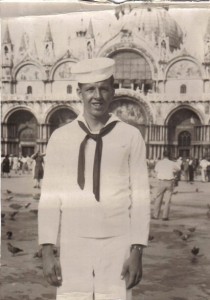
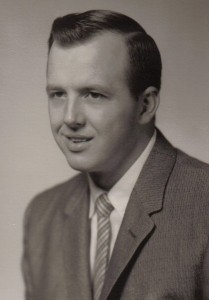
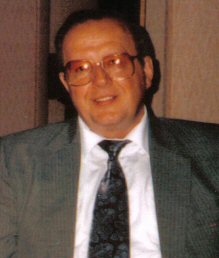 This is one of the last photos taken of Dad, circa early 90s. Even in his 60s, he had like 5 gray hairs. Not fair. He died in December of 1995, and is buried, alongside my mom, at the
This is one of the last photos taken of Dad, circa early 90s. Even in his 60s, he had like 5 gray hairs. Not fair. He died in December of 1995, and is buried, alongside my mom, at the 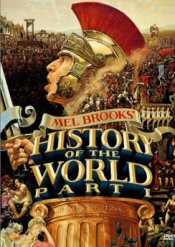 Yes, that’s probably my all-time favorite production number in any movie musical. It’s embarrassing to admit, but there you have it.
Yes, that’s probably my all-time favorite production number in any movie musical. It’s embarrassing to admit, but there you have it. The torture used in the Inquisition is part truth, part folklore. Of course, you had your standard-issue burning, whereby a heretic would be dragged to a huge wood pile, chained to a stake in the middle of it, and torched. But there were other, more hideous ways of getting someone to admit he had an impure thought against the Christian church, and Torquemada was the heavyweight champeen of coming up with them.
The torture used in the Inquisition is part truth, part folklore. Of course, you had your standard-issue burning, whereby a heretic would be dragged to a huge wood pile, chained to a stake in the middle of it, and torched. But there were other, more hideous ways of getting someone to admit he had an impure thought against the Christian church, and Torquemada was the heavyweight champeen of coming up with them.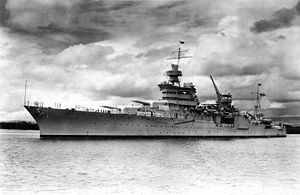
 Yeah, I’m on about Sweeney Todd again. Who knew? Actually, I watched a DVD extra from the film (thanks, Sam), and it got me thinking about a genre of theater that only lasted about 50 years, but made a big impression — obviously — on many filmmakers of our generation.While making Sweeney, director Tim Burton envisioned a movie reminiscent of the Grand Guignol tradition of live theater. So, what was this deliciously evil brand of entertainment, anyway?
Yeah, I’m on about Sweeney Todd again. Who knew? Actually, I watched a DVD extra from the film (thanks, Sam), and it got me thinking about a genre of theater that only lasted about 50 years, but made a big impression — obviously — on many filmmakers of our generation.While making Sweeney, director Tim Burton envisioned a movie reminiscent of the Grand Guignol tradition of live theater. So, what was this deliciously evil brand of entertainment, anyway? Grand Guignol (let’s first get the French right: it’s pronounced “grawn geen-yol”) was the name given to a type of play performed in Paris, beginning around the turn of the 20th century. Its creator, a controversial playwright named Menetier, bought an old chapel and converted it into a theater where he could freely show his works, which often depicted the dregs of society doing scandalous things. He eventually sold the theater to another guy, who decided to convert the Theatre du Grand Guignol into a horror palace.
Grand Guignol (let’s first get the French right: it’s pronounced “grawn geen-yol”) was the name given to a type of play performed in Paris, beginning around the turn of the 20th century. Its creator, a controversial playwright named Menetier, bought an old chapel and converted it into a theater where he could freely show his works, which often depicted the dregs of society doing scandalous things. He eventually sold the theater to another guy, who decided to convert the Theatre du Grand Guignol into a horror palace.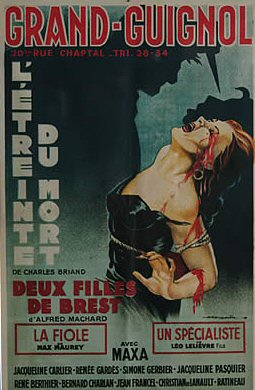 The plays got increasingly macabre and violent. More and more liberties were taken to see just how realistic a murder scene could become. Grand Guignol was in its heyday, and the theater often attracted the high society of Paris, as well as its share of tourists — all of them looking for the ultimate gross-out. They got it. The actual plot of the story didn’t seem to matter, as long as it was gruesome, bloody and realistic.
The plays got increasingly macabre and violent. More and more liberties were taken to see just how realistic a murder scene could become. Grand Guignol was in its heyday, and the theater often attracted the high society of Paris, as well as its share of tourists — all of them looking for the ultimate gross-out. They got it. The actual plot of the story didn’t seem to matter, as long as it was gruesome, bloody and realistic. But hey, remember the movie, Interview With the Vampire ? It’s based on one of my all-time favorite series of novels (The Vampire Chronicles by Anne Rice). Here’s the
But hey, remember the movie, Interview With the Vampire ? It’s based on one of my all-time favorite series of novels (The Vampire Chronicles by Anne Rice). Here’s the